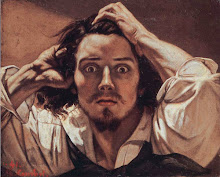Summary
Iranian politics became increasingly complex in the wake of the country’s June 12 presidential election. Cracks in the establishment have begun to spread as the country’s four top leaders — Supreme Leader Ayatollah Ali Khamenei, President Mahmoud Ahmadinejad, Parliament Speaker Ali Larijani and Expediency Council chair Ali Akbar Hashemi Rafsanjani — compete for influence.
Conclusion
A complex metamorphosis is under way in the Islamic republic and has been accelerated by the outcome of the June 12 election. The increasing complexity of the system has undermined the use of ideological labels, such as “pragmatic conservatives” and “ultraconservatives” in keeping track of the political ebb and flow. A more useful method of making sense of this struggle is to examine the political institutions in relation to each faction’s influence. The supreme leader remains at the apex of the maze, and beneath him, Ahmadinejad, Larijani and Rafsanjani are the principal political figures to watch.
Full analysis
Iran’s June 12 presidential election, which granted Iranian President Mahmoud Ahmadinejad a second term and threatened to rip the clerical establishment apart, illustrated just how complex Iranian politics can become.
The Iranian political system is a labyrinth of competing institutions made up of elected, quasi-elected and appointed officials. It is difficult to brand the Islamic republic as a pure theocracy, democracy or even an oligarchy. In reality, it is a blend of all three, where power traditionally has been concentrated in the hands of the religious elite and the right to rule comes from a mixture of divine right and the people.
Prior to 2005, when Ahmadinejad was elected to his first term as president, the political landscape in the country was roughly divided between reformists (who had risen to power during two-term President Mohammed Khatami’s time in office) and conservatives, who dominated the clerical political establishment. During Ahmadinejad’s presidency, however, a fissure opened up among the conservatives that pitted the so-called pragmatic conservatives, led by Ayatollah Ali Akbar Hashemi Rafsanjani, against an emergent ultraconservative faction led by Ahmadinejad. This split intensified in the final years of Ahmadinejad’s last term but turned vicious after the June presidential vote.
Supreme Leader Ayatollah Ali Khamenei has long attempted to remain above the fray of Iran’s factional politics, preferring to play the various blocs off each other to maintain his own position at the apex of the Iranian political system. But the fallout from the election was so severe that Khamenei had little choice but to directly intervene. The supreme leader took a calculated risk in coming out in support of Ahmadinejad and the hard-liners. This move prompted Rafsanjani’s pragmatic conservative camp to align temporarily with the reformists in a united front against the firebrand president.
Ahmadinejad entered his second term on shaky ground and chose to test his limits by trying to pack his government with loyalists. The president ended up alienating members of his own hard-line camp, including Khamenei, when on July 16 he attempted to appoint his close friend and relative, Esfandiar Rahim Mashaie, as his first vice president — an extremely controversial move given Mashaie’s past remarks on how the Islamic republic was a “friend” to the Israeli people. Ahmadinejad quickly buckled under pressure from his fellow hard-liners and canceled the appointment. However, he made Mashaie his chief of staff and top adviser, thus drawing attention to a growing unease between the president and the supreme leader.
Khamenei has continued to defend Ahmadinejad against powerful figures like Rafsanjani, but the supreme leader also understands that he needs to place limits on the president’s power. With Rafsanjani already heading up two of Iran’s most powerful institutions, there was a need for a third political front to rise up that would remain loyal to Khamenei’s wishes, but act as a counter to both Ahmadinejad and Rafsanjani. This third faction is led by Iran’s current speaker of parliament, Ali Larijani, whose clan now controls two of the three branches of the Iranian government — the legislature and the judiciary.
In addition to encouraging the rise of factions within the regime, Khamenei has taken a number of other key steps to protect his position and alter the power balances within the state. A number of non-clerical politicians like Ahmadinejad and technocrats like Larijani have risen up to diffuse the powers of the religious elites. At the same time, the military — though under the control of Khamenei and ideologically subservient to the clerics — has emerged as a powerful stakeholder in the system with a growing say in national security and foreign affairs and control over the Iranian economy.
After the clerics, Iran’s security establishment, dominated by the Islamic Revolutionary Guard Corps (IRGC), is the strongest force within the Iranian power structure. The IRGC is closely watching how the ongoing political knife fight among the elites plays out and is realizing that figures like Khamenei and Ahmadinejad are going to have to increase their reliance on the security apparatus to remain afloat politically, given the growing splits within the political establishment. The IRGC is already well on its way to exploiting this political fracas to enhance its position within the decision-making process. And should present trends continue, the IRGC could emerge as the lead group calling the shots through figurehead clerical and non-clerical politicians.


No hay comentarios.:
Publicar un comentario